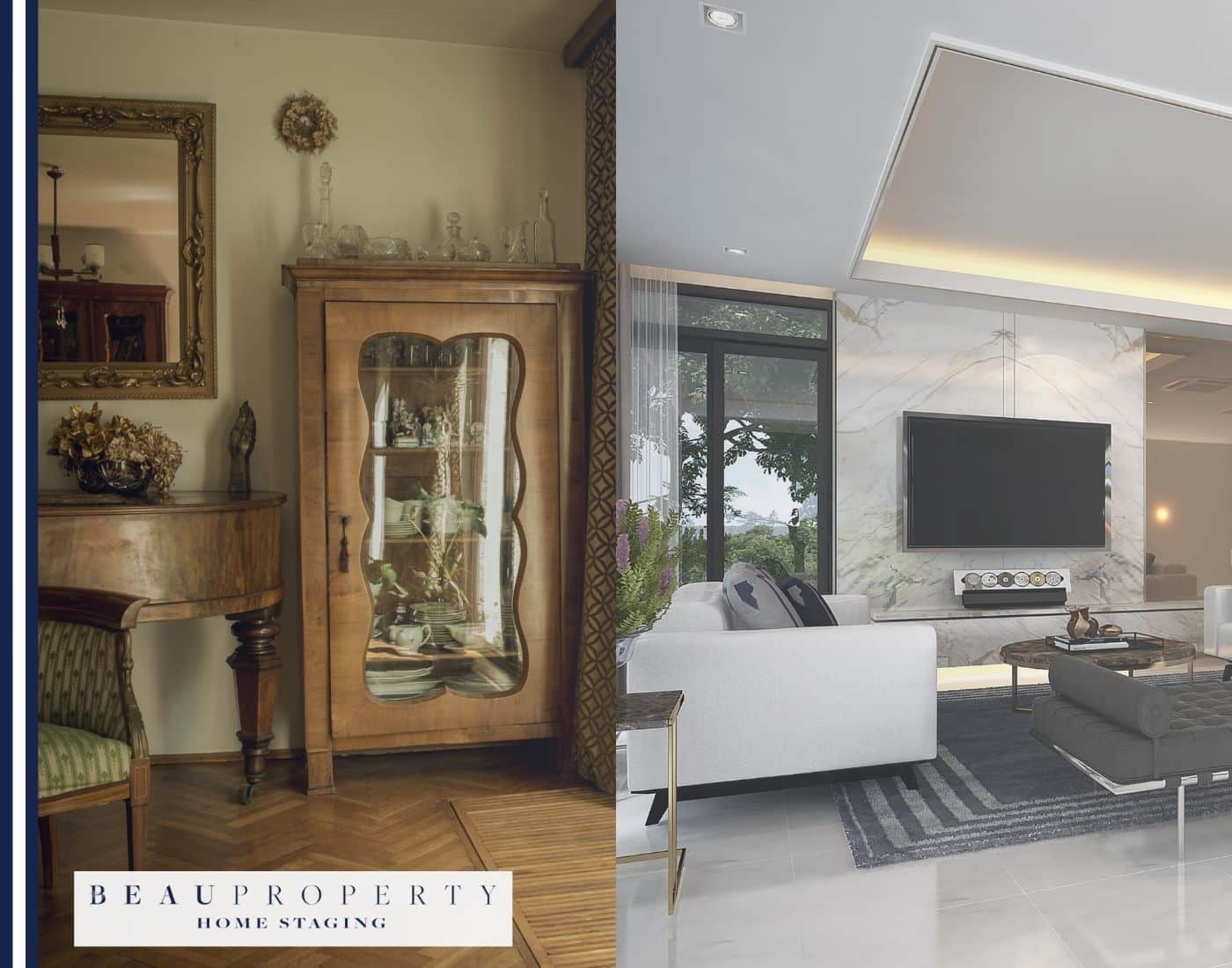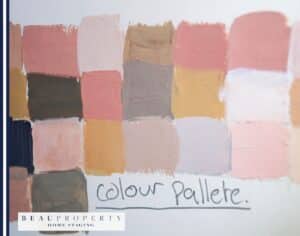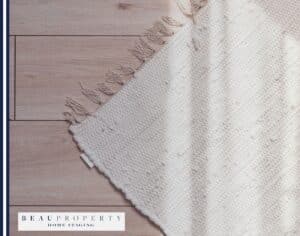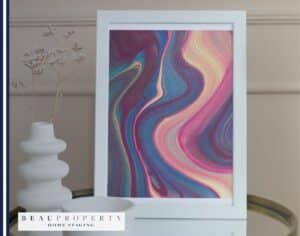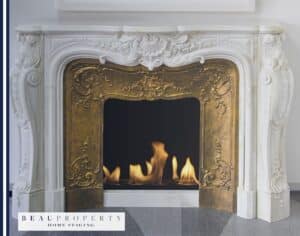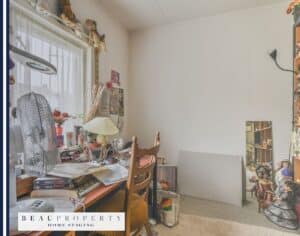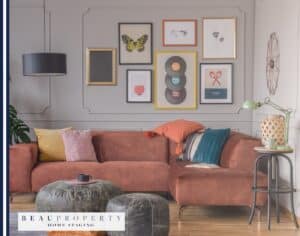Introduction to Eclectic Interior Design
What is Eclectic Interior Design?
Eclectic interior design blends elements from various periods and styles into one cohesive space. It avoids strict rules or matching sets. Instead, it celebrates individuality by bringing together different textures, colours, and forms. In a modern context, eclectic design is less about chaos and more about intentional mixing. Each chosen piece has a role in the room’s overall feel, creating harmony from diversity.
The Appeal of Combining Vintage and Modern Elements
The mix of vintage and modern items is at the heart of eclectic interiors. Vintage pieces add character, history, and a sense of nostalgia. Modern items provide sleekness and practical comfort. When these elements combine, they create lively rooms that feel like personal stories rather than showrooms. This approach has wide appeal because it offers warmth and authenticity while staying current and functional.
Creating a Personalised Space
An eclectic approach frees you from trends and gives complete creative freedom. Every object and finish can reflect your personality, travels, or family history. The result is a room that feels welcoming and one-of-a-kind. Rather than following a single style, you build a layered look that is truly your own, ensuring your space feels lived-in and deeply personal.
This foundation sets the stage for understanding how to balance various elements and principles within eclectic design.
Understanding the Principles of Eclectic Design
Intentional Juxtaposition
A central feature of eclectic design is the purposeful placement of contrasting elements within a space. By combining objects, materials, or styles that may seem at odds (such as a sleek modern lamp with a rustic wooden table) the room gains visual interest and energy. This juxtaposition creates a carefully curated, rather than random, blend that defines the eclectic aesthetic.
Balance, Rhythm, Scale, and Proportion
Crafting a harmonious eclectic interior depends on mastering balance and rhythm. Balance ensures the space feels stable, whether through symmetry or asymmetry. Rhythm is formed by the repetition or variation of elements (such as colour, shape, or texture) which guides the eye and brings visual cohesion. Scale and proportion are also crucial; mixing oversized and petite furniture can overwhelm, so similar proportions across key pieces help the space feel comfortable and unified.
Mixing Three or More Styles
Authentic eclectic design requires the integration of at least three distinct design influences. This diversity distinguishes eclectic interiors from merely mixing two contrasting looks. The skill lies in selecting elements that differ but work together, such as pairing mid-century, Victorian, and industrial details in a cohesive setting. This method produces rooms that feel layered and personal, yet intentionally composed.
By applying these core principles, you can build a space that feels dynamic and visually connected, preparing for more focused decisions in your next steps.
Establishing Your Design Foundation
Determining Mood and Colour Palette
Before choosing any furniture or accessories, decide on the overall mood you want for your space. Are you leaning towards a calm and inviting feel or something bold and energetic? Establish your intention early, as it will guide every future decision. Next, select a colour palette. Using three main colours brings cohesion. A popular approach is the 70/20/10 rule: use your dominant colour for 70% of the space (often walls and large pieces), a secondary colour for 20%, and a bold accent for the final 10%. Typically, the dominant shade is neutral or subtle, creating a versatile base.
The Role of a Neutral Backdrop
A neutral backdrop (think whites, soft greys, or beiges) acts as a blank canvas. It allows distinctive vintage and modern elements to shine without competing or looking cluttered. This foundation promotes visual harmony and keeps the overall space grounded, no matter how bold your accents or statement pieces may be.
A strong foundation is essential to curate a successfully eclectic space. With thoughtful planning, your chosen colour scheme and backdrop will support a seamless blend of old and new elements.
Balancing Vintage and Modern Elements
Achieving Harmony Between Old and New
Blending vintage and modern elements begins with thoughtful curation. Start by selecting a few statement vintage pieces, such as a mid-century armchair or an ornate chandelier, to serve as focal points. These pieces set the tone and provide a unique character, acting as anchors for your design. To maintain a sense of harmony, balance ornate, detailed items with the clean lines and simplicity of modern furnishings.
A helpful guideline is to follow a mix, for example using roughly 20% vintage to 80% modern elements, ensuring the space feels neither antique nor overly contemporary. Aim for repetition of colours, materials, or shapes across periods to tie pieces together. For example, a modern sofa can be paired with a vintage rug that echoes the sofa’s tone or texture.
Preventing One Style from Overwhelming
Avoid letting one style dominate. Limit the number of bold or ornate elements in a single room. If you’re using a striking vintage rug, keep most other furnishings sleek and modern to maintain balance. Use accessories (such as cushions, vases, or lighting) to introduce hints of one style into the domain of another, creating cohesion without clutter.
This approach not only creates a visually engaging environment but allows each era to shine without conflict or chaos.
With a balanced mix, your home tells a layered story, full of character, and ready to evolve as you add new finds or treasured heirlooms.
Furniture Selection and Placement
Mixing Furniture from Different Eras
Blending pieces from various eras adds character to an eclectic interior. Start by identifying the dominant period (usually about 70–80% of your main furniture) and complement it with pieces from other times to achieve balance. For example, pair a modern sofa with vintage armchairs, or a rustic table with contemporary chairs. Repeat elements such as colour, finish, or material throughout the room to create unity and coherence. Avoid dividing the room into separate style zones; instead, allow each piece to interact naturally.
Achieving Visual Balance
Visual harmony comes from careful placement and an awareness of scale. Distribute “visual weight” by counterbalancing large pieces (such as a substantial traditional armoire) with lighter, more modern items or open space. Select versatile pieces, like a classic coffee table or sleek console, that can bridge eras gracefully. Be mindful of proportion: avoid clustering heavy, ornate antiques with slim, minimal contemporary pieces that might look overwhelmed. Instead, balance contrasting forms and select accent pieces that tie the room together.
Functionality alongside Aesthetics
Function should lead as much as beauty. Choose furniture that suits your lifestyle, the best pieces feel comfortable and offer the right storage or support. For example, combine a functional vintage chest with modern seating. Each addition should serve a purpose as well as enhance the space visually. Focus on traffic flow, accessibility, and comfort, ensuring that your eclectic choices work together to make the room inviting as well as striking.
By applying these principles, your room will feel unified and lived-in rather than pieced-together.
Playing with Texture, Pattern and Colour
Incorporating Texture for Visual Interest
Adding varied textures is essential for an engaging and dynamic interior. Texture goes beyond touch, it shapes how a space looks and feels. Blend materials like smooth leather with rough linen or pair glossy ceramics with matte woods. These contrasts create subtle layers that draw the eye and invite interaction. Even lighting can contribute by softening or intensifying the feel of a room. Thoughtful combinations, such as velvet sofas alongside natural woven rugs, help inject depth without creating confusion. Aim for a balance: do not overcrowd the room with too many competing surfaces, but curate a mix that adds warmth and tactile variation.
Mixing Patterns Without Chaos
Pattern mixing brings energy to eclectic spaces when done intentionally. Use the “rule of three”: blend a large-scale, medium-scale, and small-scale pattern for balance. Start with one standout motif, layer in supporting designs with less intensity, and break up patterns with plain expanses. Opt for patterns that share similar colour notes or underlying styles to create unity. For example, you might pick a floral print, a geometric pattern, and a subtle stripe, ensuring at least one colour appears across all three.
Unifying Eclectic Elements with Colour
Colour acts as the glue in an eclectic room. Select a cohesive palette before introducing patterns and textures. A neutral wall allows bold textiles, art, or accessories to stand out, while repeating accent colours throughout the space ties disparate pieces together. Cohesive colour choices prevent visual noise and build harmony. Even with varied styles, consistent colours give the space a sense of purpose and connection.
Texture, pattern, and colour together elevate an eclectic interior, making it personal yet harmonious. Each element should be chosen with intention, supporting both comfort and creative expression.
Incorporating Vintage Accessories into Modern Spaces
Selecting the Right Vintage Accessories
Choosing vintage accessories can add character and depth to a modern interior. Focus on items with strong shapes, interesting patinas, or unexpected details. Start with smaller pieces, such as brass candlesticks, ceramic vases, or ornate picture frames. Look for objects that reflect your personal taste rather than simply matching the era. A mix of textures, like glass, metal, and wood, blends well with contemporary settings.
Seek out unique items that tell a story, like antique mirrors or clocks. Be selective, edit your choices to avoid visual clutter. Display only those pieces that complement your overall colour scheme and design foundation.
Using Vintage Textiles in Contemporary Settings
Introduce vintage textiles to bring warmth and softness to modern interiors. Patterned rugs, embroidered cushions, or heirloom quilts add a layer of history and tactile interest. Drape a vintage throw over a modern sofa, or upholster a chair in retro fabric. Use these touches sparingly for balance, making sure the colours coordinate with your space.
Highlighting Architectural Details
Vintage accessories can also play a key role in drawing attention to architectural features. Position antique wall sconces to frame a fireplace or highlight original cornices with period-appropriate ornaments. Place old books or curios on open shelves to add both function and visual appeal.
Careful integration of these accessories bridges each design era, offering a space that feels considered and harmonious.
Creating Focal Points and Visual Interest
Using Statement Pieces for Impact
Establishing a focal point is essential in eclectic interiors. A statement piece such as an ornate vintage chair, textured rug, or striking artwork can serve as a visual anchor. Consider scale carefully. A bold object should suit the room’s size and draw attention without dominating every view. Opt for pieces that reflect your personality or carry a sense of history. Unusual shapes, rich patinas, or distinctive patterns help these pieces stand out in an otherwise neutral space, creating immediate interest and depth.
Balancing Old with New
A harmonious blend of bold vintage elements and modern simplicity is key. Use clean lines and muted palettes as a backdrop, then allow a vintage feature like a retro lamp or mid-century table to take centre stage. Too many statement items can lead to clutter. Limit standout pieces and let supporting accents remain subtle. This deliberate restraint keeps the space curated and visually calm, ensuring vintage items feel intentional rather than overwhelming.
Mastering Unexpected Combinations
Conversation pieces are central to an eclectic home. Pairing unexpected elements, such as a sleek modern sofa with an antique mirror, sparks curiosity and tells a unique design story. These combinations invite discussion and make your space memorable. The goal is to place these items so the eye is naturally drawn to them, whether through contrast, texture, or strategic lighting.
Blending statement pieces with refined backdrops results in spaces layered with personality, ready for further exploration of design traditions and local influences.
The British Approach to Eclectic Design
Distinctive Characteristics
British eclectic interiors are instantly recognisable for their depth and individuality. Designers in the UK excel at layering patterns, colours, furniture and visual focal points, achieving an aesthetic that feels lived-in yet considered. This approach celebrates heritage and storytelling, often blending cherished heirlooms with innovative pieces and artisan craftsmanship. Rather than following fleeting trends, British interiors focus on personal expression, quality, and items with emotional significance. There is a playful edge, seen through unexpected combinations that balance tradition and modernity, all while maintaining comfort and cohesion.
Influence of Climate
The UK’s temperate, often damp climate necessitates a layered, cosy approach. Insulation is key, with timber widely used for its warmth and energy efficiency. British interiors rely on soft furnishings (think wool throws, plush rugs, and heavy drapes) to add comfort and retain heat through colder months. Warm colours and textured accessories further enhance the homely atmosphere, making interiors inviting during long winters.
Incorporating Tradition with Modernity
Traditional British design elements such as ornate fireplaces, bay windows and period joinery are respected and carefully highlighted, even as rooms are updated with modern amenities. Patterns like floral wallpapers or classic woodwork coexist with streamlined furniture and contemporary art. The result is a seamless transition from the past to present, where distinctive British motifs anchor an eclectic, modern lifestyle.
Thoughtful mixing ensures spaces feel unique and harmonious, offering endless inspiration for blending old and new in creative ways.
Common Mistakes to Avoid
Steering Clear of Visual Clutter
A frequent pitfall in eclectic interiors is filling the space with too many statement items. Overcrowding can make even the most thoughtfully chosen pieces lose their impact. Allow for open areas, so individual objects can stand out and the room does not feel chaotic. Over-accessorising and layering every surface with different pieces makes the design feel confusing rather than collected.
Avoiding a Disjointed Feel
Without a connecting thread (such as consistent colour, finishes, or materials) eclectic rooms can feel disjointed and random. To maintain flow, carry unifying elements through the space, like an anchor colour or repeating shapes. Abruptly switching styles or themes from room to room is also jarring. Ensuring some continuity with patterns or tones helps guide the eye and strengthens cohesion.
Exercising Editing and Restraint
Even in maximalist schemes, discipline is essential. Editing pieces that do not fit the overall vision prevents rooms from feeling forced or overcrowded. Aim for intentionality, each item should have a purpose or story. Focus on quality over quantity, allowing curated selections to speak for themselves.
By keeping these principles in mind, you ensure your creative expression results in a harmonious and inviting space.
Real-Life Examples and Inspiration
Showcasing UK Eclectic Interiors
Across the UK, eclectic homes celebrate bold mixes of age, style and personality. In creative living rooms, you might see richly patterned rugs grounding modern sofas, with striking vintage sideboards for character. Homeowners often use symmetry, such as matching panels or balanced arrangements, to maintain order amidst variety, creating instant balance and harmony even with disparate elements.
Analysis: Making It Work
What unites these successful spaces is commitment to a limited palette, be that through walls, fabrics or accessories. Examples include limewashed walls in soft neutrals as a calm backdrop, letting colourful vintage finds and contemporary artworks become the focal points. Thoughtful furniture placement and choosing only a few statement pieces avoids clutter, ensuring every item earns its place.
Practical Takeaways
To bring this look home:
- Start with a neutral base to display bold items confidently
- Pick one or two key vintage items to anchor a room
- Layer patterns and textures in small doses
- Repeat colours or shapes for cohesion
These approaches encourage you to blend eras with confidence, resulting in layered spaces that feel both personal and harmonious.
Conclusion: Creating Your Unique Eclectic Style
Creating an eclectic home is about thoughtful curation and personal connection. Begin by focusing on picking pieces that genuinely resonate with you, considering their history and quality instead of amassing random items. The strongest eclectic interiors reflect their owners’ stories through deliberate choices, with treasured vintage finds balanced by streamlined modern touches.
Blend three or more styles, using colour or form to provide unity. Select statement items with care, and create visual rest through neutral backdrops and empty spaces. Remember, editing is as important as collecting. Rotate your favourite items, and refrain from overcrowding display areas, to maintain both interest and calm.
Your eclectic space should celebrate contrasts (soft textiles with hard metals, old patinas alongside crisp finishes) while avoiding visual chaos. Allow your home to evolve gradually, adding and retiring pieces so it always feels intentional and fresh. The result will be a unique, layered look where every item has a purpose and personal meaning.

